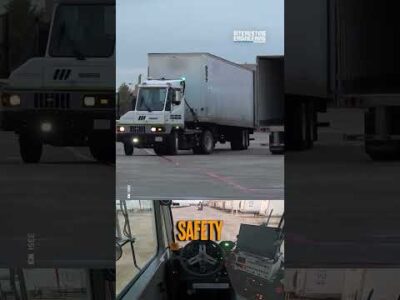Waabi’s A.I.-powered trucks are ready to reshape trucking in 2025. Discover how generative A.I. is steering the future of autonomous transport.
—
Quick Facts

| | |
|—|—|
| Funding Raised | $280+ million |
| Autonomous Driving Success Rate | 99.7% in simulated scenarios |
| Driverless Trucks Launch | Texas, end of 2025 |
| Global Expansion | Canada, Europe, Asia in pipeline |
—
Founded in 2021, Waabi charged into self-driving tech just as industry hype peaked—but with a radical twist. Skipping outdated, high-cost testing models, Waabi aimed instead to create A.I. that thinks, reasons, and adapts with human-like intuition.
Now, fueled with over $280 million and pilot partnerships with industry titans like Uber and Volvo, Waabi is turning heads as its driverless trucks prepare to conquer Texas roads in late 2025.
—
Why Did Waabi Bet on Generative A.I. While Rivals Stuck to the Script?
Waabi saw a broken system: endless road tests, sky-high R&D tabs, incremental improvements. While other startups hit roadblocks, Waabi’s breakthrough? Generative A.I. that can imagine millions of “what ifs.” This A.I. doesn’t just follow rules—it invents new, real-world scenarios, training itself for the unpredictable chaos of highway life.
Instead of sending trucks across the country on grueling test loops, Waabi’s software runs endless simulations—making it smarter, faster.
—
How Does Waabi’s Trucking Tech Actually Work?
Picture a virtual “driving school” for machines. Waabi’s A.I. engine, trained on a flood of both real and generated scenarios, now boasts a 99.7% accuracy rate in mimicking unpredictable traffic hazards. It’s a new era of self-driving: adaptability, safety, and speed, solidified by cutting-edge simulation tech.
Want to know more about advances in A.I.? Visit Google for recent breakthroughs guiding this revolution.
—
Will A.I. Really Replace Human Truck Drivers?
Not overnight. Waabi’s CEO, Raquel Urtasun, foresees a nuanced road ahead. Current drivers worried about being sidelined can rest easier—retirement will still come from the cab, not the curb. However, A.I. will create new roles: terminal operators, remote vehicle monitors, safety trainers, and more.
Urtasun, who transitioned from leading Uber’s self-driving arm to founding Waabi, is open about the hurdles: regulation, public trust, and industry ethics remain crucial.
—
What Sets Waabi Apart from U.S. A.I. Startups?
Waabi is proudly rooted in Toronto, doubling down on Canada’s powerhouse academic A.I. tradition—yet it builds trucks and hardware in the U.S. This homegrown approach lets Waabi tap global talent while nimble enough to dodge sweeping auto tariffs and pivot amid policy shifts.
Backers include Khosla Ventures, Nvidia, and agile partnerships like Uber Freight and Volvo, all fast-tracking Waabi’s journey to global markets.
—
Where Is Waabi Headed After Texas?
The roadmap is ambitious. Eyes are on Canada, Europe, and Asia, as Waabi gears up for international launches. Mid-term plans involve partnering with logistics giants and scaling up simulation capabilities for even tougher geographies.
Waabi’s ultimate vision? A world where robots—starting with trucks—transform not just freight, but the daily lives of everyone from commuters to seniors.
—
Ready for the future of driverless transport? Stay curious, stay informed, and ride the wave of A.I. innovation!
—
Action Checklist:
– Watch for Waabi’s driverless trucks debuting in Texas late 2025
– Follow A.I. transport trends at Google
– Learn about new career paths in terminal operations and remote assistance
– Track partnerships with global logistics and tech leaders
– Stay alert for expansion news across Canada, Europe, and Asia
Adapt, learn, and embrace the A.I. era—trucking’s future is arriving fast!
This post Meet the Genius Behind Waabi: The A.I. Trailblazer Set to Unleash Fully Driverless Trucks on Texas Highways appeared first on Macho Levante.







